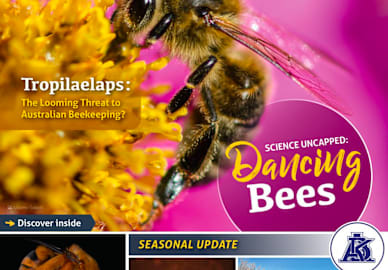Figures reveal beekeepers in the US lost an estimated 48% of their honey bee colonies in 2022-23. According to an annual survey that tracks the state of managed hives, this is the second highest death rate on record after 2020-21’s 51%. Honey bees are crucial to our food supply, pollinating over 100 different crop types.
As reported by Bee Informed, a national collaboration of leading research labs and universities in agricultural science, the most prominent cause of colony death reported by commercial beekeepers over the year was Varroa destructor - a parasitic mite that attacks and feeds on honey bees. In the Summer, ‘Queen Issues’ were the second most common reason cited, followed by ‘Adverse Weather’.
The Bee Informed Partnership (https://beeinformed.org) is a non-profit organisation that strives to improve honey bee colony health in the United States by performing data-driven research in collaboration with beekeepers. Its vision is to create an environment where new and established beekeepers can be successful in maintaining healthy honey bee colonies.
One of the organisation’s longest running programs, the national Colony Loss and Management Survey, was initiated with the support of the Apiary Inspectors of America in 2007. The survey is organised in collaboration with the Bee Lab at Auburn University (https://aub.ie/bees) and the Bee Lab at University of Maryland (https://www.umdbeelab.com/).
The survey is a retrospective online questionnaire, which relies on voluntary participation of beekeepers across the country during the month of April. The 2023 survey covered the one-year period between April 2022 and April 2023. Small scale beekeepers (1-50 colonies) and large-scale beekeepers (>50 colonies) took slightly different versions of the survey (survey question previews can be found at https://beeinformed.org/citizen-science/loss-and-management-survey/).
This year, 3,006 beekeepers from across the United States provided valid survey responses. These beekeepers collectively managed 314,360 colonies on 1 October 2022, representing 12% of the estimated 2.70 million managed honey-producing colonies in the country in 2022 (USDA NASS, 2023).
Colony loss rates were calculated as the ratio of the number of colonies lost to the number of colonies managed over a defined period. Loss rates should not be interpreted as a change in population size, but are best interpreted as a mortality rate. High levels of losses do not necessarily result in a decrease in the total number of colonies managed in the United States because beekeepers can replace lost colonies throughout the year.
According to the publication, “although the total number of honey bee colonies in the country has remained relatively stable over the last 20 years (~2.6 million colonies according to the USDA NASS Honey Reports), loss rates remain high”. This puts beekeepers under “substantial pressure” to create new colonies each year.





